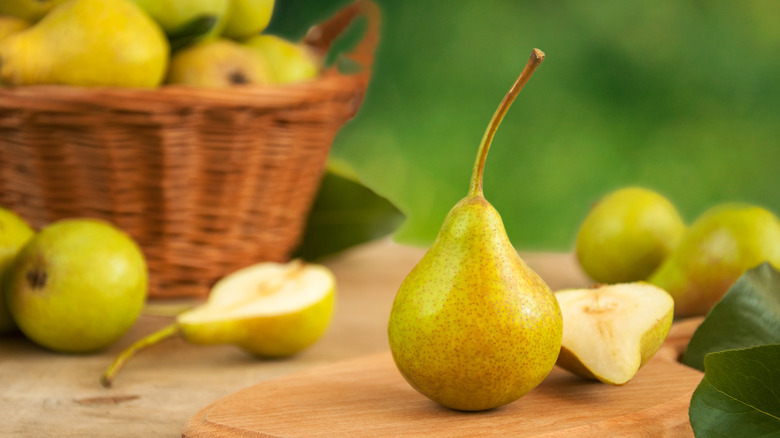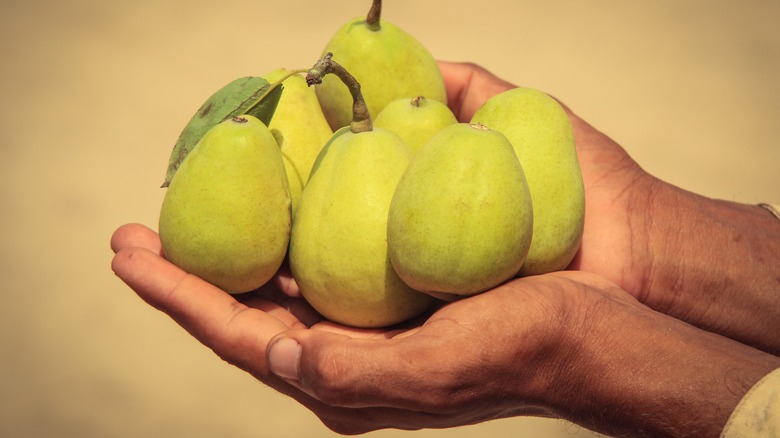The Easy Way To Check If A Pear Is Ripe
Ask any grandparent or watermelon-slapping dad: For every fruit, there's a small window in which it will be just ripe enough to maximize the flavor and texture without becoming a sloppy, mushy, weird-tasting mess. But for pears, there's a little bit of wiggle-room — and some control when it comes to timing the ripeness.
According to Exploratorium, pears are one of the rare fruits that do not ripen completely while on the tree: Pears are picked once they have grown to a certain size, but before they have ripened. This may seem a bit odd but it can actually be quite useful when you don't want to have to eat or find recipes for your pears as soon as you get them.
According to Food Network, there are lots of different kinds of pears with different indicators of ripeness (some even change color as they ripen), but it's generally a good idea to examine the neck of the pear.
Feeling the necks of your pears
As Food Network explains, you should be feeling the necks of your pears to assess where the fruits are in the ripening process. As MasterClass explains, a well-ripened pear will feel tender at the neck, not mushy but not rock hard either. So it's a good idea to check all your pears before you purchase them, as you don't want them getting overripe and mealy before you are ready to eat or cook with them.
There are a few ways to ripen your pears, and all of them are pretty easy to do. You could just leave some pears out at room temperature and let them ripen naturally with time, or you could put some in a paper bag and leave them to ripen together. As they ripen, pears produce ethylene gas, which can expedite the process. Bananas produce even more ethylene gas than pears, so you can ripen them together to get the process started quicker.

